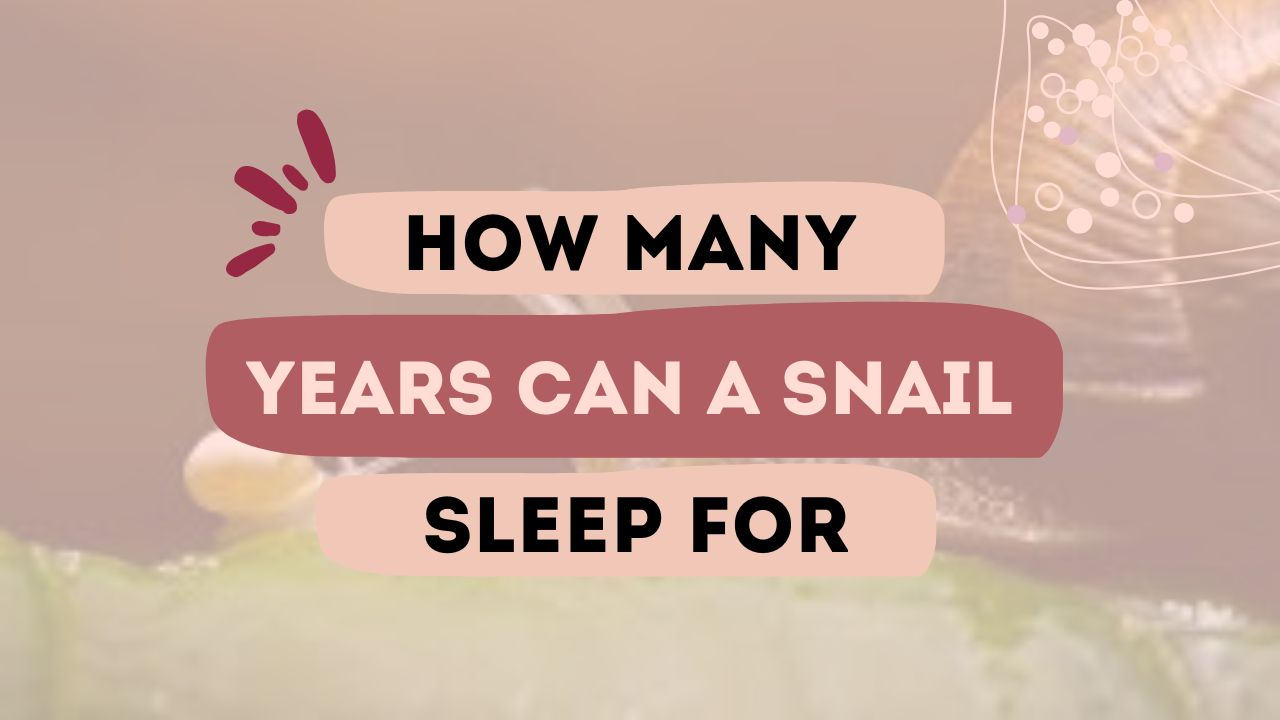If you’ve ever wondered how long a snail sleep or if snails even sleep at all, you’re not alone. Snails, those slow-moving, mucus-trailing creatures, seem to have a fascinating ability to rest for long periods of time, which leads to the common question: how many years can a snail sleep for? Well, the answer isn’t as straightforward as you might think. These little guys can actually “sleep” for extended periods, but calling it sleep in the traditional sense might be a bit of a stretch.
In this article, we’ll dive into the world of snails and their unique ability to enter dormancy. Whether you’re curious for fun facts, are a snail enthusiast, or just stumbled across this question, we’ll explore how long snails can sleep, what triggers it, and how it works. So grab a comfy chair and let’s uncover the mysterious life of these slow and steady creatures!
What Is Snail “Sleep”?
First, let’s clear up what we mean by “sleep” in the case of snails. When we talk about a snail sleeping, it doesn’t exactly mean the same thing as what humans do at night. Snails don’t close their eyes (they don’t have eyelids!) and snooze in cozy little beds. Instead, what snails experience is more of a state of dormancy or hibernation, particularly during times when environmental conditions aren’t ideal for their survival.
For many species of snails, sleep-like behavior is linked to extreme temperatures, lack of moisture, or other environmental stressors. You might hear this referred to as aestivation (when they sleep to avoid heat or drought) or hibernation (when they rest through cold winters). So, when we talk about snails sleeping for extended periods, we’re mostly talking about these periods of dormancy. Now, how long can this last? Well, let’s dig into that!
How Long Can a Snail Sleep?
The big question! The short answer: a snail can sleep for anywhere between a few days to several years, depending on the species and environmental conditions. Some snails are known to hibernate for up to three years. Yup, you read that right—three years of “sleep.” But, of course, that depends on the specific conditions in which the snail finds itself.
Snails enter a state of dormancy primarily due to environmental factors, such as extreme temperature or lack of moisture. If their habitat dries up, for instance, they can seal themselves off in their shells and wait out the dry conditions until it’s safe to come out again. While in this state, their metabolic rate drops dramatically, which allows them to survive without eating or drinking for extended periods of time. It’s a survival mechanism that’s pretty impressive when you think about it.
What Factors Trigger Snail Dormancy?
As mentioned, environmental factors like temperature and humidity play a huge role in a snail’s decision to “sleep.” Let’s take a closer look at these triggers:
- Lack of Moisture: Snails need moisture to stay hydrated, and without enough water, they’ll start to dry out. If the environment becomes too dry, snails can seal themselves inside their shells using a mucous membrane to keep moisture in. This can lead to a long period of dormancy until conditions improve.
- Extreme Heat: On particularly hot days, snails may also become inactive to avoid desiccation (drying out). They will retreat into shaded areas, seal themselves in, and essentially shut down until cooler, more favorable conditions arrive.
- Cold Weather: In colder climates, some species of snails enter a form of hibernation during the winter months. Much like animals that hibernate, they reduce their metabolic processes and stay dormant to conserve energy and protect themselves from freezing temperatures.
So, when you’re asking about how long a snail can sleep, it’s really all about the environmental conditions. The better the conditions for a snail, the shorter its dormancy period might be. In less-than-ideal conditions, however, they can remain dormant for years.

Can Snails Really Sleep for Years?
Yes, some species of snails have been documented to sleep for years, but it’s important to note that they’re not actually sleeping in the way we think of it. Instead, they’re in a prolonged state of dormancy to survive unfavorable conditions. One well-known example of this comes from the Pupilla muscorum, a type of land snail. These snails have been reported to survive for up to three years in a dormant state, waiting out periods of extreme drought.
If you’re thinking about how long a pet snail might sleep, however, that’s a different story. Pet snails, especially those kept in terrariums or more controlled environments, usually don’t experience dormancy for long stretches, unless you intentionally withhold water or make the environment excessively dry. In a more balanced and healthy environment, your snail will be active and feeding regularly.
How Do Snails Survive During Dormancy?
While a snail is dormant, it doesn’t just “sleep” away like we do. The process of sealing itself up in its shell and going into dormancy involves some interesting survival strategies:
- Sealing the Shell: When a snail enters dormancy, it secretes a special layer of mucus that forms a protective barrier over the opening of its shell. This keeps moisture in and prevents dehydration.
- Metabolic Slowdown: The snail’s metabolism slows down dramatically, which means it doesn’t need to eat or drink for long periods of time. In fact, during dormancy, snails can go months or even years without food.
- Low Energy Consumption: Because of the metabolic slowdown, snails are conserving energy. They rely on whatever fat reserves or energy they have stored up before entering dormancy to survive until conditions improve.
Can You Wake a Snail from Dormancy?
If you have a pet snail and it appears to be dormant, you might wonder if there’s anything you can do to wake it up. The answer is yes, but you need to be gentle. If your snail is dormant because the environment is too dry, increasing humidity and providing water may encourage it to rehydrate and become more active. Just make sure not to rush the process, as forcing a snail to wake up too soon could cause harm.
Final Thoughts
So, how long can a snail sleep for? The answer is surprisingly long—up to several years under the right conditions. While this isn’t “sleep” in the traditional sense, it’s an incredible survival strategy that allows snails to weather harsh environments. Whether you’re fascinated by snails or just curious about their bizarre behaviors, it’s clear that these creatures are well-equipped to handle tough situations, all while taking it slow (as they do).
Whether you’re hoping to learn more about pet snails or just love learning about the wonders of the animal world, keep in mind that snails have a lot more tricks up their shells than you might expect!

